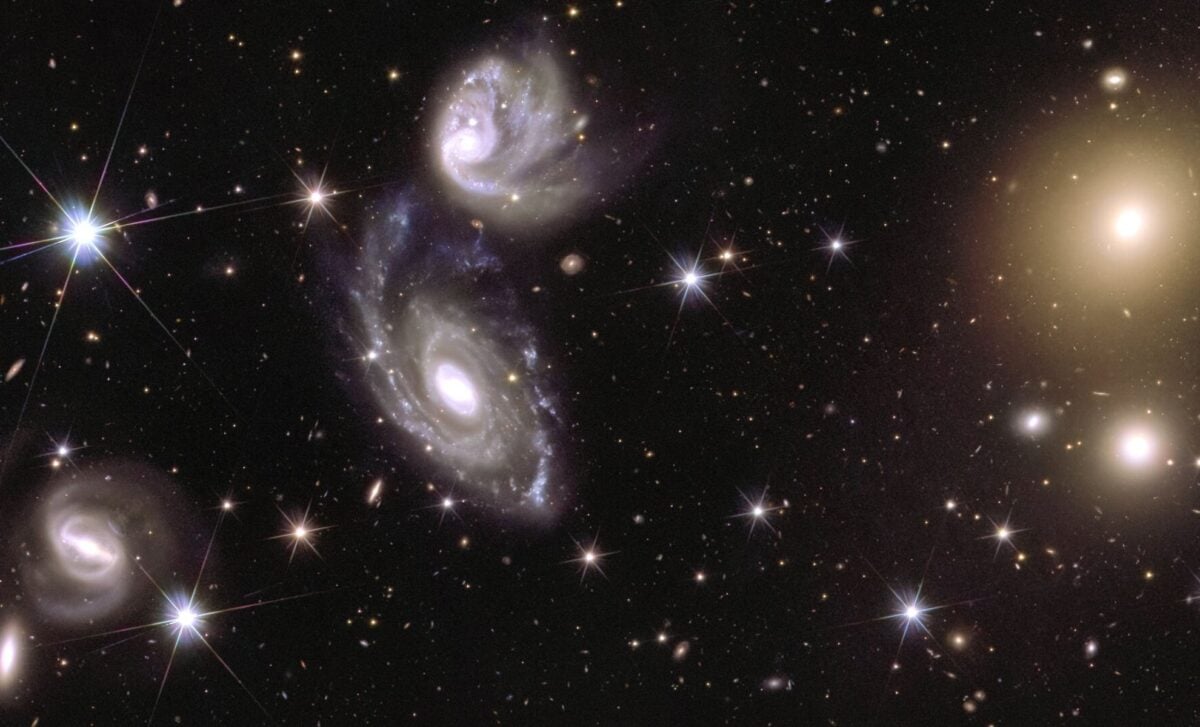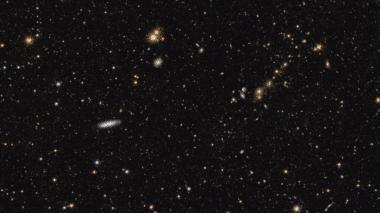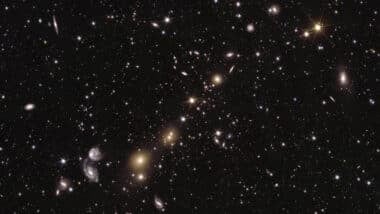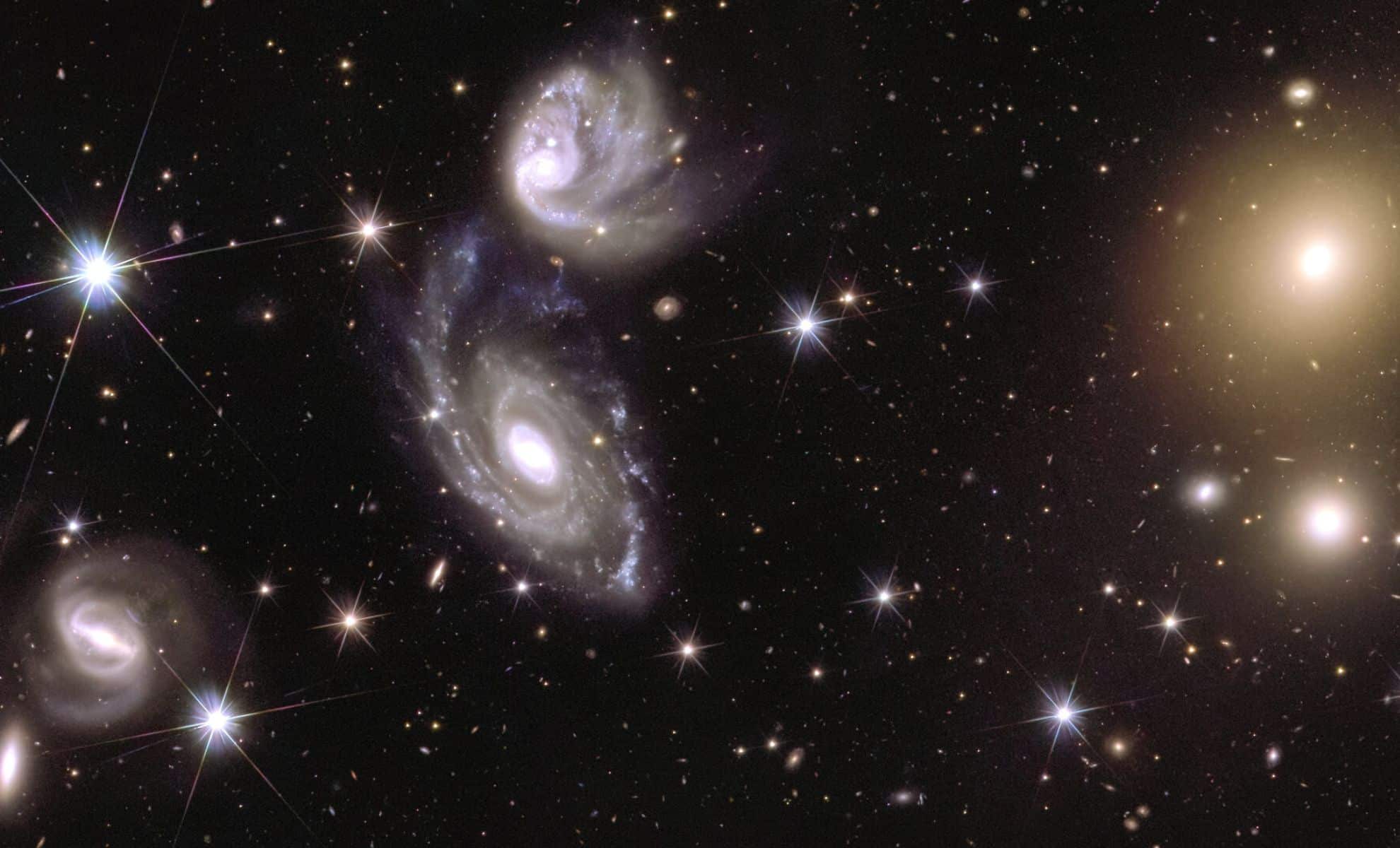The Euclid Space Telescope, launched by the European Space Agency, has released its first detailed images of the universe as part of its mission to map the cosmos. This first mosaic contains 208 gigapixels of data, capturing millions of stars and galaxies. Euclid will continue to map the universe over the next six years, providing key insights into the nature of dark matter and dark energy, helping scientists understand how the universe expands and evolves.
Euclid Telescope Reveals First Stunning Images from Cosmic Atlas

The European Space Agency’s Euclid Space Telescope has captured its first detailed images of the universe, marking a significant step in its mission to create the largest 3D map of the cosmos.
Released on October 15, 2024, the breathtaking images show a vast mosaic of stars and galaxies, offering a glimpse into the mysteries of dark matter and dark energy that the telescope aims to unravel.
A 208-gigapixel Mosaic of the Cosmos
Euclid's initial release includes a mosaic made up of 208 gigapixels of data, gathered during a two-week observation period between March 25 and April 8, 2024. This first image, described by ESA as "just the first piece of the puzzle," covers only 1% of the area that Euclid will eventually survey over its six-year mission. Despite this small fraction, the mosaic is already a monumental achievement, offering insights into both nearby stars within the Milky Way and more than 14 million distant galaxies.
"This stunning image is the first piece of a map that in six years will reveal more than one-third of the sky," said Valeria Pettorino, Euclid Project Scientist at ESA. "This is just 1% of the map, and yet it is full of a variety of sources that will help scientists discover new ways to describe the universe."
The region mapped in this image spans about 132 square degrees of the Southern Sky, which is more than 500 times the area of the full moon. By the time Euclid completes its mission, it will have created a three-dimensional map of the universe, showing galaxies up to 10 billion light-years away.

Uncovering the Dark Universe
Euclid's primary mission is to help answer some of the biggest questions in modern cosmology, particularly around dark matter and dark energy, which together make up about 95% of the universe’s content. The telescope uses a 600-megapixel camera and a near-infrared spectrometer to measure redshift, a key factor in determining the distance and velocity of galaxies as they move away from us. By analyzing these movements, Euclid will map how the universe has expanded over time, offering crucial data on how dark energy accelerates this expansion.
"Euclid is observing the universe in a brand new way, and it's gonna get a gigantic census of the galaxies," said Luz Ángela García Peñaloza, a cosmologist at Universidad ECCI in Colombia. "Any image that reveals information about the distribution of galaxies in the large-scale structure of the universe will provide handfuls of information on the nature of the dark side of the cosmos."
One standout feature of the images released is the high level of detail in individual galaxies and galaxy clusters. For instance, the core of galaxy cluster Abell 3381, located 678 million light-years away, was captured in stunning resolution. This allows scientists to zoom into specific regions of space and examine intricate details of galactic structures.

A Look at the Galactic Cirrus
Euclid’s camera also captured an unusual phenomenon known as galactic cirrus, faint clouds of gas and dust that appear as light blue streaks between the stars of the Milky Way. These clouds, which resemble cirrus clouds in Earth's atmosphere, reflect the light of the Milky Way and shine brightly in the infrared spectrum. Euclid’s ability to visualize these features highlights the telescope’s exceptional sensitivity to both visible and infrared light.
In fact, Euclid's ability to capture such fine details of both nearby and distant objects allows scientists to "zoom" deep into specific areas of the mosaic. In one instance, a spiral galaxy located 420 million light-years away is shown in exquisite detail, with researchers able to zoom in 600 times to examine its structure.
Future Milestones for Euclid
This initial image is just a glimpse of what’s to come. Euclid’s first year of cosmology data is expected to be released to the scientific community in 2026, with more detailed maps being published as the mission progresses. In March 2025, the release of a 53-square-degree segment of the survey, including a preview of the Euclid Deep Field areas, will provide even more data for scientists to analyze.
As the Euclid mission continues, it is expected to offer profound insights into the structure of the universe, how it has evolved, and how dark matter and dark energy shape the cosmos. According to García Peñaloza, "This is just the beginning of what we will be able to see in Euclid's lifetime. For sure, the best is still to come! I'm positive Euclid will shed light on our understanding of the cosmic mysteries."



